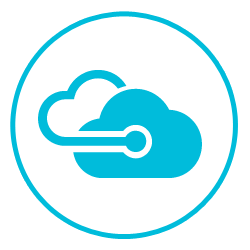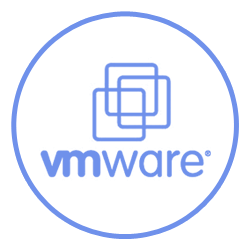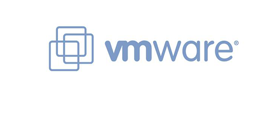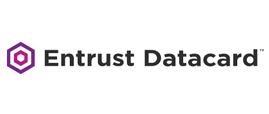-
Welcome to My Website
This is a text box. Write your own content here. This is an excellent place for you to add a paragraph.
Netway Support Center
เราพร้อมบริการคุณ ตลอด 24 ชั่วโมง
Payment & Invoices
Products Knowledge










Zendesk




Other Cloud Products
Technical Knowledge
Website/Install Application & FTP
Linux Technical Knowledge
Windows Technical Knowledge
Database
Blog list (8)
Hosting additional domains in Direct Admin
Hosting additional domains in Direct Admin This demo assumes you've already logged in to Direct Admin Now let's learn how to host additional domains in our hosting account Click the Domain Setup link Then click Add Another Domain Enter the additional domain name you want hosted here This is where you add new domain names to be hosted within your main hosting account Set the bandwidth and disk space allowances for this new domain When finished, click Create You can also decide if you want this new domain to have SSL, CGI or PHP privileges Click the Home icon here That's it! The new domain has been setup Click anothersite.com Now whenever you click Home, or login to Direct Admin, you'll have to choose which domain you want to manage Scroll down... Click the Home icon You can always tell which domain you're managing by looking here Now click demo1234.com This is the end of the tutorial. You now know how to setup and host additional domains in your hosting account
How to backup your website in Direct Admin
How to backup your website in Direct Admin Click the Create/Restore Backups link This demo assumes you've already logged in to Direct Admin Now let's learn how to backup our website/files, and restore them Scroll down... This is the main backup screen, where you can select specific portions of your account to backup..... Leave everything checked if you want everything in your account backed up Let's go ahead and create a backup of this account..... click Create Backup Scroll down... Now let's download the latest backup to our computer..... click here The backup file has been created Click Save Click Save again When the download is complete, click Close Now let's go take a look at the backups we have stored in our hosting account..... click here Click the Home icon here Here is our backup, listed in the Backups folder of File Manager Go back to Create/Restore Backups Scroll down... Select the file you wish to restore from this list Now let's learn how to restore files from a backup Then click here to restore the files You can choose to restore only part of the account, by unchecking the boxes next to the items you don't want restored Scroll down... Let's restore the entire account.... click here Scroll down... Click here to return to File Manager The account was successfuly restored Now let's restore the backup that we previously saved to our computer Scroll down... Click Upload files to current directory Locate the backup file on your computer Then click Open Click Upload Files That's it! The backup has been uploaded to the server, and can now be used to restore the account Click the Home icon here This is the end of the tutorial. You now know how to backup your account to the server, or to your own computer..... and how to restore previously saved backups from the server, or from your computer
How to create a catch-all email account in Direct Admin
How to create a catch-all email account in Direct Admin This demo assumes you've already logged in to Direct Admin Now let's learn how to create a catch-all email account Scroll down... Click the Catch-All E-Mail link Let's go ahead and set a catch-all email address You have three (3) choices in how to deal with emails being sent to addresses that don't exist, or aren't setup in your hosting account 1) You can have the email returned to the sender... 2) You can have the email dropped (deleted) and completely ignored... 3) Or you can have these emails forwarded to a specific email address, which can be an address within your hosting account, or an unrelated address Let's select an email address we already have setup in this hosting account Then click the Update button That's it! The new catch-all email account has been setup Click the Home icon here This is the end of the tutorial. You can return to the catch-all email setup screen at any time, to change your catch-all email settings
How to setup a Cron Job in Direct Admin
How to setup a Cron Job in Direct Admin This demo assumes you've already logged in to Direct Admin Now let's learn about Cron Jobs and how to set them up in Direct Admin Scroll down... Click the Cronjobs link A Cron Job is a system command that you schedule to occur at a later date/time For example, if you wanted to run a CGI script every Monday morning, you would set this up as a Cron Job Scroll down... This is the main Cron Job page where you can setup new Cron Jobs, or delete existing ones Let's setup a Cron Job..... Enter the path of the script you wish to run When finished, click Add In this case, we're setting up a Cron Job to run the test_script.cgi every morning at 9:00am To delete the Cron Job, simpy select it here, then click Delete The Cron Job has been setup, and can be seen here Scroll up to the top of the page The Cron Job has been deleted Click the Home icon here This is the end of the tutorial. You now know how to setup Cron Jobs in Direct Admin, as well as delete them. For more information on using Cron Jobs, please consult www.site-helper.com/misc.html#cron
How to create custom error pages in Direct Admin
How to create custom error pages in Direct Admin This demo assumes you've already logged in to Direct Admin Now let's learn how to create custom error pages in our hosting account Scroll down... Click the Custom Error Pages link Click the 404.shtml link here This page lists all the error pages you can edit from Direct Admin. Let's go ahead and edit the 404 Not Found error page, which displays automatically if someone attempts to visit a page in your website that doesn't exist Paste the HTML code of the page you want displayed, here in this text area Scroll down... Before saving the file, let's take a look to see if it looks ok... click Preview Html Let's return to the edit page.... close this window This shows what the 404 Error Page will look like Now let's save this page by clicking here The 404.shtml page is now listed in the File Manager, here Click the Home icon here This is the end of the tutorial. You now know how to setup and modify your custom error pages from within Direct Admin
-
Domain
-
Hosting
-
Cloud & Managed
-
SSL
-
Email
- เรียนรู้เพิ่มเติม
- Microsoft 365 รุ่นต่างๆ
- Microsoft 365 สำหรับธุรกิจ
- Microsoft 365 สำหรับใช้งานที่บ้าน
- ทดลองฟรี
- G Suite
- เทคนิคลดต้นทุนอีเมล Microsoft 365 มากกว่า 28%
- เทคนิคลดต้นทุนอีเมล G Suite มากกว่า 19%
- Zimbra-Based Email
- Traditional Email by cPanel
- Physical to Cloud Migration
- Exchange Server to Microsoft 365 Migration
- G Suite to Microsoft 365 Migration
- Microsoft 365 to G Suite Migration
- Cloud to Cloud Migration
-
Microsoft
-
Google
-
Marketing
-
Others
-
Blog
-
Microsoft Teams
-
microsoft-365-business-premium
-
test-slide
-
Order
-
Promo






















.png)



.png)


















